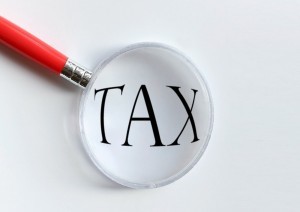On 06/03/24 Chancellor Jeremy Hunt presented his Spring Budget to… Read More
Dividend tax for small business owners

The changes effective from 6/4/16 to dividends have adversely affected almost every company business owner.
There is now a new nil rate which applies to the first £5,000 of a person’s dividend income each tax year.
UK residents will now pay tax on any dividends received over the £5,000 allowance at the following rates:
7.5% on dividend income within the basic rate band;
32.5% on dividend income within the higher rate band; and
38.1% on dividend income within the additional rate band.
Dividends received on shares held in an Individual Savings Account (ISA) and pension funds continue to be tax free.
Individuals in receipt of dividend income who will fall into the self-assessment regime for the first time, will need to notify HMRC accordingly. Self-Assessment returns for the 2016-17 tax year need to be submitted by 31 January 2018.
The introduction of the new allowance was designed to help the Government with its plan to reduce the corporation tax rate over the coming years from its current rate of 20% to 17% by 2020 and to avoid tax based incorporations.
The overall idea is that only those with significant dividend income, or those who are able to pay themselves dividends in place of wages, will pay more tax. It is estimated that around one million individuals will pay less tax on their dividend income due to the new dividend allowance. These are likely to be individuals with modest share ownership.
In calculating into which tax band any dividend income over the £5,000 allowance falls, savings and dividend income are treated as the highest part of an individual’s income. Where an individual has both savings and dividend income, the dividend income is treated as the top slice.
Worked example 1 – low salary, higher dividend
|
|
Non Savings | Savings | Dividend | Total |
| Salary | 8,000 | 8,000 | ||
| Interest | 500 | 500 | ||
| Dividend | 41,000 | 41,000 | ||
| Personal Allowance | (8,000) | NIL | (3,000) | |
| Total income | 49,500 | |||
| Taxable | NIL | 500 | 38,000 | |
| PSA (500 @ 0%) | NIL | |||
| BR ( 5,000@ 0%) | NIL | |||
| BR ( 27,000 @ 7.5%) | 2,025 | |||
| HR ( 6,000 @ 32.5%) | 1,950 | |||
| Total Personal Tax |
3,975 |
Worked example 2 – high salary, lower dividends
|
|
Non Savings | Savings | Dividend | Total |
| Salary | 40,000 | 40,000 | ||
| Interest | 500 | 500 | ||
| Dividend | 9,000 | 9,000 | ||
| Personal Allowance | (11,000) | NIL | NIL | |
| Total income | 49,500 | |||
| Taxable | 29,000 | 9,000 | ||
| PSA (500 @ 0%) | NIL | |||
| BR ( 29,000@ 20%) | 5,800 | |||
| BR ( 3,000@ 0%) | NIL | |||
| HR ( 2,000@ 0%) | NIL | |||
| HR ( 4,000 @ 32.5%) | 1,300 | |||
| Total Personal Tax |
7,100 |
More HMRC worked examples are available here.
Note that there are other tax implications such as employees and employers NIC on salary, as well as the corporation tax charge of 20% prior to any dividends taken from the company, so please ensure you take advice before extracting funds from your limited company business.
Moore Accountancy can help with providing advice to owner managed businesses. Contact us on 07542299247 or at info@mooreaccountancy.co.uk





Follow Moore Accountancy – Accountants Manchester, Manchester Accountancy Practice